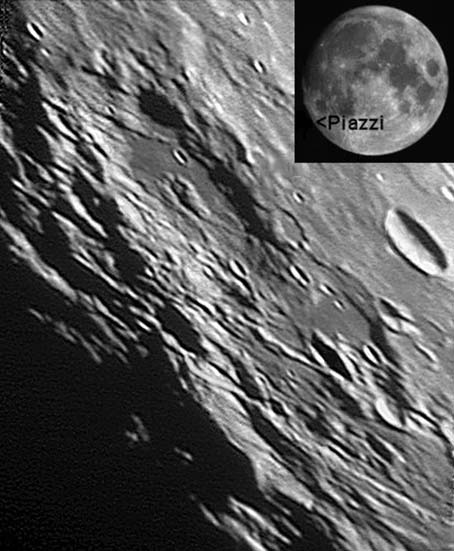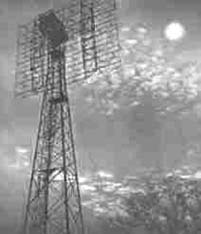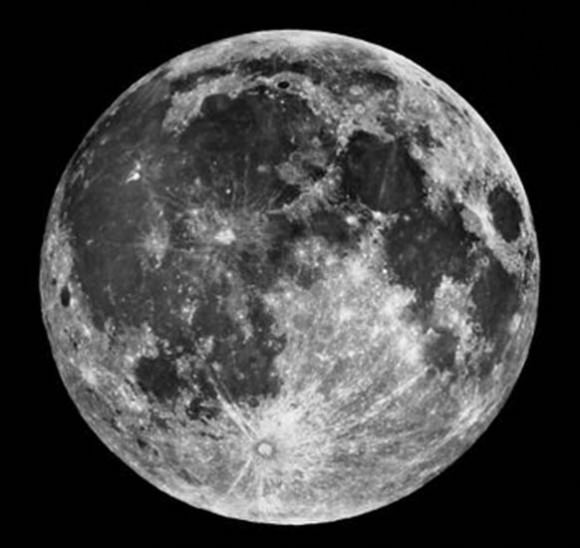Greetings, fellow SkyWatchers! It’s “Hunger Moon” weekend and if you’re starving for a little observing action, then get out the telescope and do some crater work. It’s time to spot the magnificent Piazzi and Mare Orientale! Even though bright skies will prohibit much viewing, there’s still lots of history to learn and things to find out. Ever wonder how Oceanus Procellarum got its name? Let’s wander out to the backyard together and find out….
Friday, January 9, 2009 – Tonight it’s time to get serious about lunar observing. Look to the southwestern limb along the terminator and take on a challenge crater named for our asteroid discoverer, Giuseppe Piazzi. Viewable in binoculars, this 101 kilometer-long, shallow oval comes to resolution through a telescope at high magnification. To Piazzi’s north is the walled plain Lagrange, which shares a common border and a whole lot more. During the Moon’s violent past, the impact that formed Mare Orientale basin to the northwest slung ejecta across the two older formations, forming ridges and valleys. Look closely at Piazzi’s northeast rim where areas of the original interior floor appear darker.

Because of the Earthly viewing angle, we’re unable to determine the true width of this magnificent old crater with the broken and eroded rim, but we can tell the height of its most intact wall. Although it looks shallow, it stretches up above the floor 2,300 meters—as high as Scoglio della Metamorfosi (the Yosemite of Europe) in Valle di Mello, Italy. Bellissimo!
Tonight in 1839, Scottish astronomer Thomas Henderson (whose impressive list of 60,000 star positions earned him the title of Astronomer Royal of Scotland) became the first to measure the distance to a known fast-moving star using geometric parallax. Taking a cue from the terrestrial effect, where closer objects seem to move faster than those farther away, Henderson’s calculations were within 30% of modern measurements, and his intuition was absolutely spot on. Alpha Centauri is indeed the closest star to our own Solar System.
Saturday, January 10, 2009 – On this date in 1946, Lt. Col. John DeWitt, a handful of full-time researchers, and the U.S. Army’s Signal Corps were about to become the first group to successfully employ radar to bounce radio waves off the Moon. It might sound like a minor achievement, but let’s look into what it really meant.
 Believed impossible at the time, scientists were hard at work trying to find a way to pierce Earth’s ionosphere with radio waves. Project Diana used a modified SCR-271 bedspring radar antenna aimed at the rising Moon. Radar signals were broadcast, and the echo was picked up in exactly 2.5 seconds. Discovering that communication was possible through the ionosphere opened the way to space exploration. Although a decade would pass before the first satellites were launched into space, Project Diana paved the way for these achievements, so send your own ‘‘wave’’ to the rising Moon tonight!
Believed impossible at the time, scientists were hard at work trying to find a way to pierce Earth’s ionosphere with radio waves. Project Diana used a modified SCR-271 bedspring radar antenna aimed at the rising Moon. Radar signals were broadcast, and the echo was picked up in exactly 2.5 seconds. Discovering that communication was possible through the ionosphere opened the way to space exploration. Although a decade would pass before the first satellites were launched into space, Project Diana paved the way for these achievements, so send your own ‘‘wave’’ to the rising Moon tonight!
Let’s note the 1936 birth of Robert W. Wilson, the co-discoverer (along with Arno Penzias) of the cosmic microwave background. Although the discovery was a bit of a fluke, Wilson’s penchant for radio was no secret. As he once said, ‘‘I built my own hi-fi set and enjoyed helping friends with their amateur radio transmitters, but lost interest as soon as they worked.’’

Don’t you lose interest in the night sky just because the Moon is out! Look towards Cassiopeia, which contains the strongest known radio source in our own galaxy—Cassiopeia A. Although traces of the 300-year-old supernova can no longer be seen in visible light, radiation noise still emanates from 10,000 light-years away—an explosion still expanding at 16 million kilometers per hour! So, where is the source of this radio beauty? Just a little bit north of the constellation’s center star.
Sunday, January 11, 2009 – Rising opposite the setting Sun is a beautiful sight: the Hunger Moon, a name from Native American folklore. In the Northern Hemisphere, this was a time of snow and deep winter, when hunting was poor and wild dogs would roam by Moonlight searching for food. Let’s take a closer look.

The vast dark area on the western side is Oceanus Procellarum —the ‘‘Ocean of Storms.’’ Encompassing most of the northwest quadrant and stretching across 2,102,000 square kilometers of area, it rivals the Bering Sea in sheer size. No wonder the ancients considered it to be an ocean! Created by lava floods but never contained within an impact basin, it’s similar to Earth’s Siberian Traps—great upwellings of lava from our shared primeval history.
Oceanus Procellarum’s name could refer to its vivid volcanic past, but it originated from a myth claiming stormy weather ahead if it was visible during the second quarter. Although the Moon doesn’t play a role in our Earthly weather, what could cause such a myth to arise?
Factually, if skies are clear enough to see the Ocean of Storms during the night, they’ll allow heat to escape directly into our upper atmosphere. Rising air can cause clouds to form. Water vapor molecules cool and begin coalescing faster than they can be scattered by thermal energy, condensing and forming clouds where only one of two things can happen. Water molecules will either evaporate, changing back into vapor, or join to grow liquid drops, whose critical mass will fall back to Earth as either rain or snow.
On this date in 1787, Sir William Herschel was also looking at a moon, but not ours. This is the date he discovered two of Uranus’ many moons—Oberon and Titania!
Until next week, ask for the Moon… But keep on reaching for the stars!
This week’s awesome images are: Crater Piazzi by Alan Chu with inset by Roger Warner, Project Diana (historical image), “Light Echoes From Cassiopeia A” courtesy of Spitzer Space Telescope and the Full Moon is from NASA.


Is a bedspring radar some kind of MacGyver device that they actually made out of bedsprings, or does it just look like bedsprings, hence the name?
the bedspring radar got its name from its appearance!
the 10 most important things to remember when it comes to astronomy? hmmm….
1. there are no dumb questions.
2. looking at astronomy without thinking about the science behind it is like looking at a tree without leaves.
3. looking at astronomy without history is like looking at a tree without roots.
4. looking at astronomy without physics and cosmology is like looking at a tree without branches.
5. looking at astronomy without actually going out and looking through a telescope is like looking at a picture of a tree and saying you’ve seen one.
6. don’t be afraid to make mistakes.
7. don’t ever let anyone tell you that you have to have a college degree to learn about and/or enjoy astronomy. the world is at your virtual fingertips! use it and learn….
8. remember that professional astronomers are real people. most of them will go out of their way to answer questions and help folks to learn more about the subject they are passionate about!
9. don’t let anyone discourage you. just because some guy somewhere on the web says there’s no point in going out to watch the X meteor shower because there is a moon and it’s not a good meteor shower anyway… don’t listen. that may be the one night the incredible bolide decides to open up in your sky!
10. when opportunity knocks? ya’ gotta’ be there to open the door. if you have a chance to listen to a lecture, visit a planetarium, sit in on a teleconference, get email notifications of aurora alerts, sunspot activity, etc. take that opportunity!! even if you can’t use all the knowledge that you get right away, you are feeding your inquiring mind…
and that’s why you’re here!!
wishing you the very best… 😉